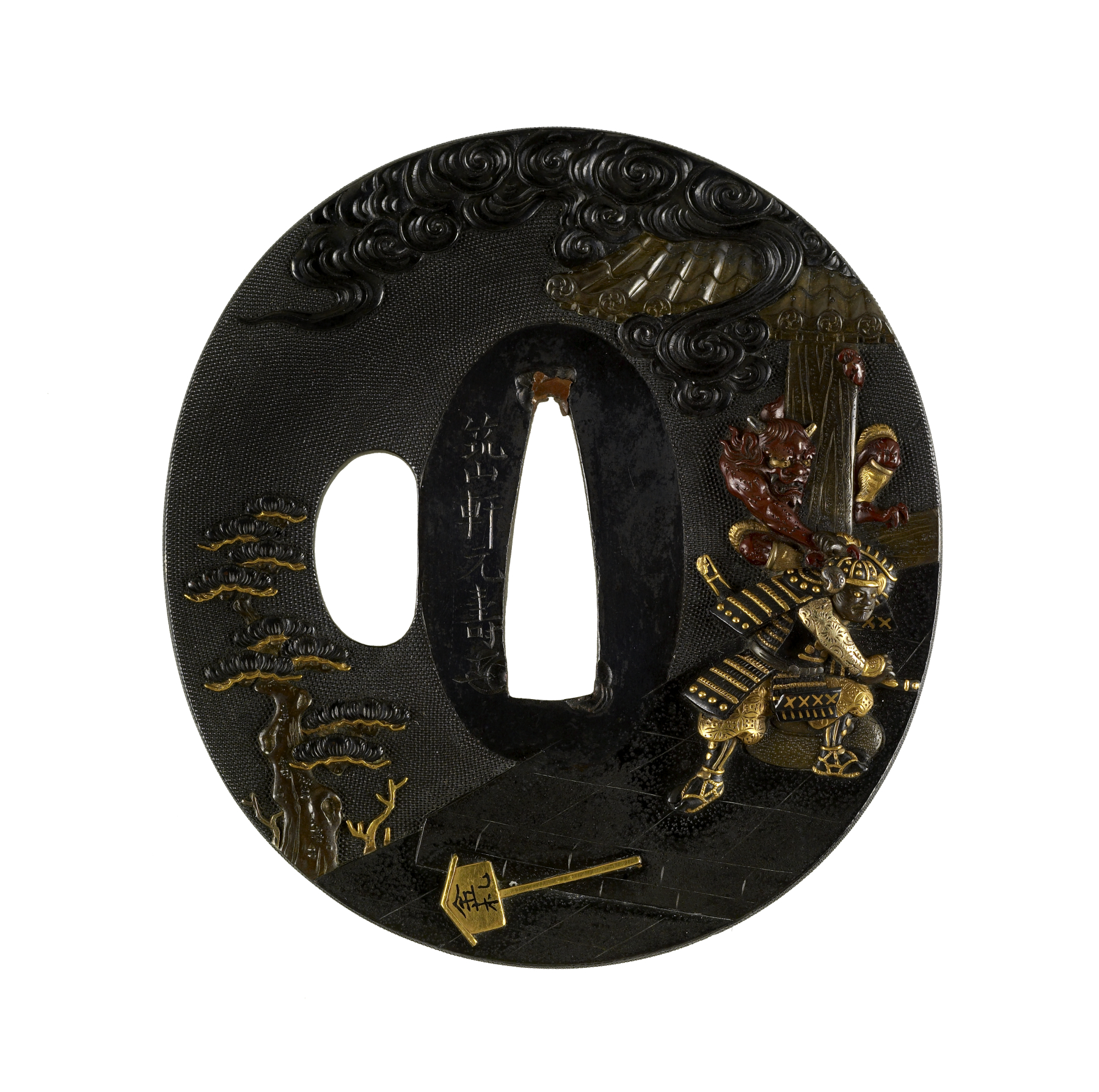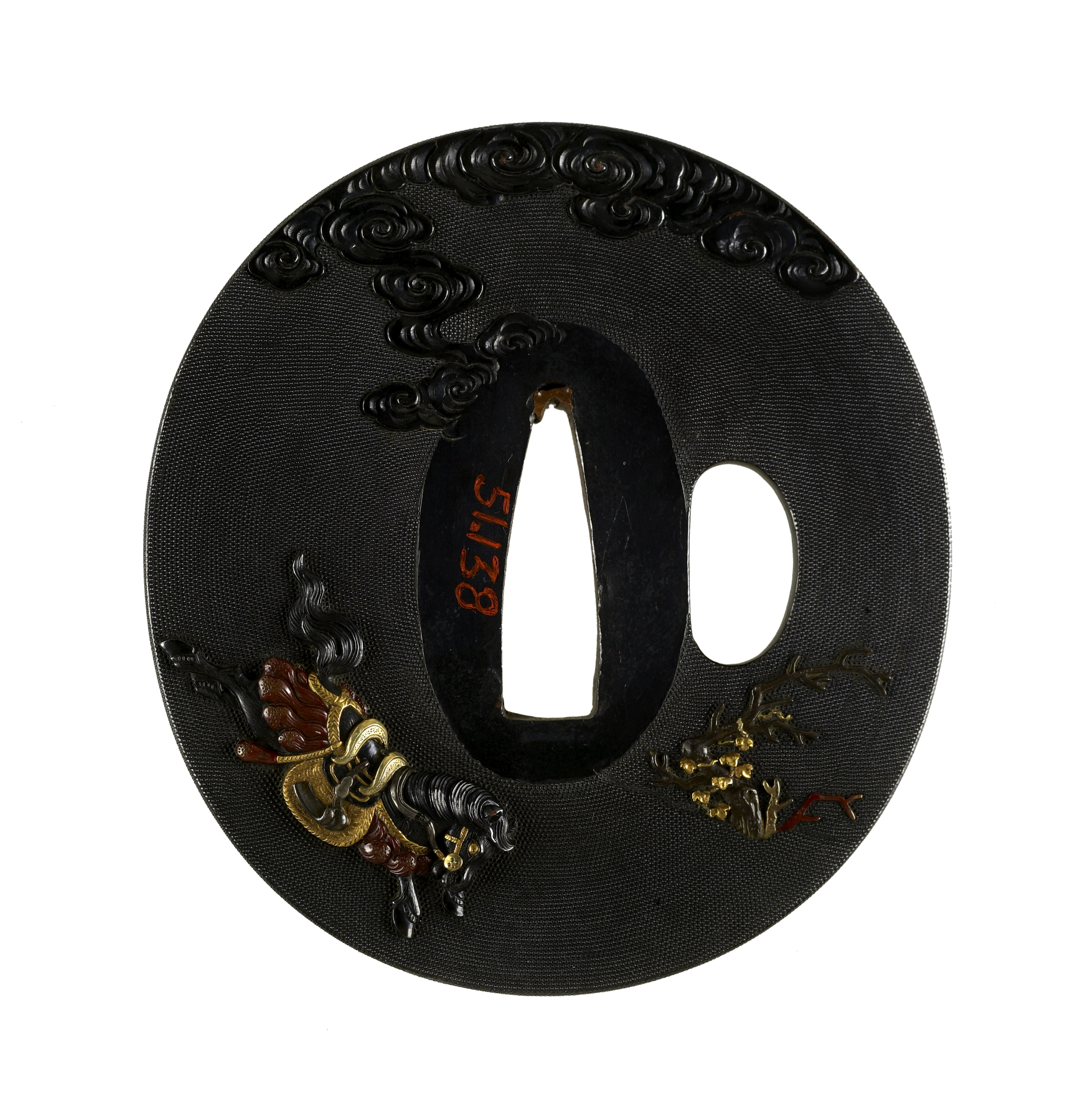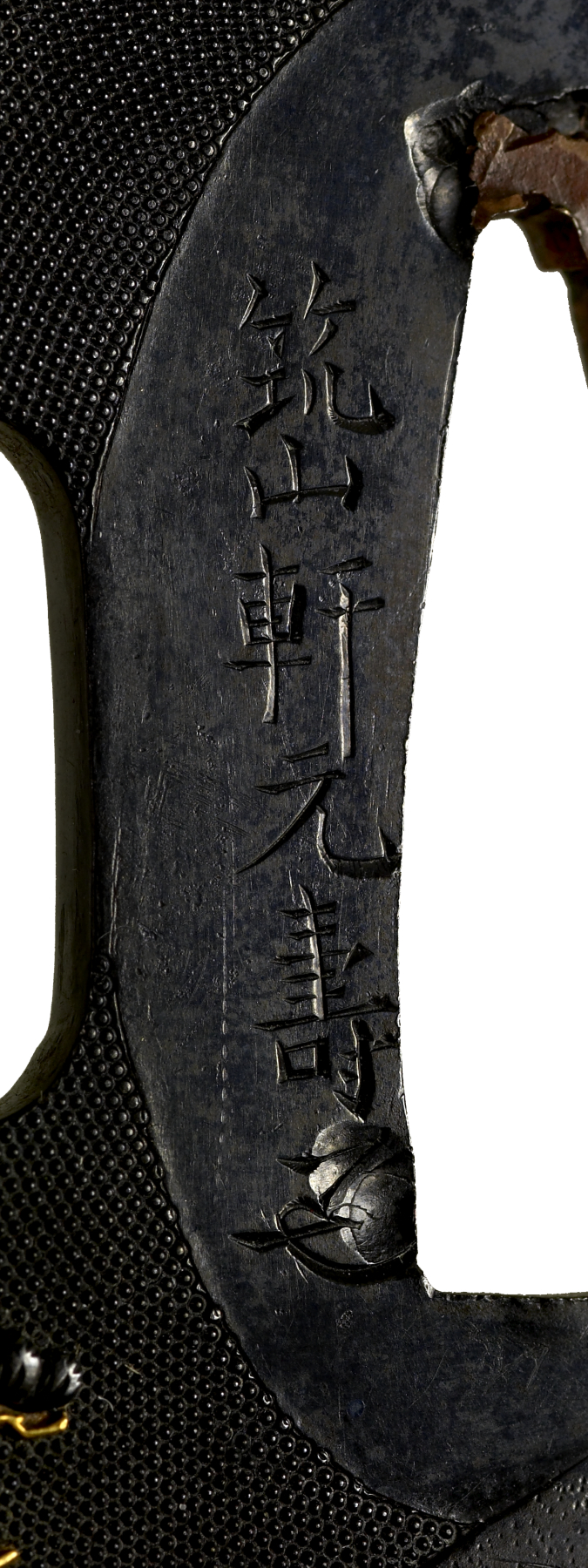Tsuba with Watanabe no Tsuna Fighting the Demon at Rashomon
(Japanese Military Armor)
This tsuba shows Watanabe no Tsuna, a warrior who lived in the late 10th and early 11th century. One stormy night, he lay in wait at the Rashomon Gate in Kyoto to wait for one of the last demons left in the city. Very late at night, he felt something tugging at his helmet. Striking out with his sword, he cut off the demon's arm. The demon ran away and Tsuna kept the arm locked in an iron box. On the tsuba, the oni can be seen pulling at Tsuna's helmet. The storm is shown through the swirling clouds at the top of the tsuba. A sign that had been knocked over in the wind lays at the bottom of the tsuba. On the back is Tsuna's horse running away.
Inscription
Provenance
Provenance (from the French provenir, 'to come from/forth') is the chronology of the ownership, custody, or location of a historical object. Learn more about provenance at the Walters.
Henry Walters, Baltimore [date and mode of acquistion unknown]; Walters Art Museum, 1931, by bequest.
Exhibitions
| 1989 | The Nature of Loyalty: Japanese Warrior Prints of the Nineteenth Century. The Walters Art Gallery, Baltimore. |
Geographies
Japan, Mito (Place of Origin)
Measurements
H: 2 11/16 in. (6.9 cm)
Credit Line
Acquired by Henry Walters
Location in Museum
Not on view
Accession Number
In libraries, galleries, museums, and archives, an accession number is a unique identifier assigned to each object in the collection.
In libraries, galleries, museums, and archives, an accession number is a unique identifier assigned to each object in the collection.
51.138






